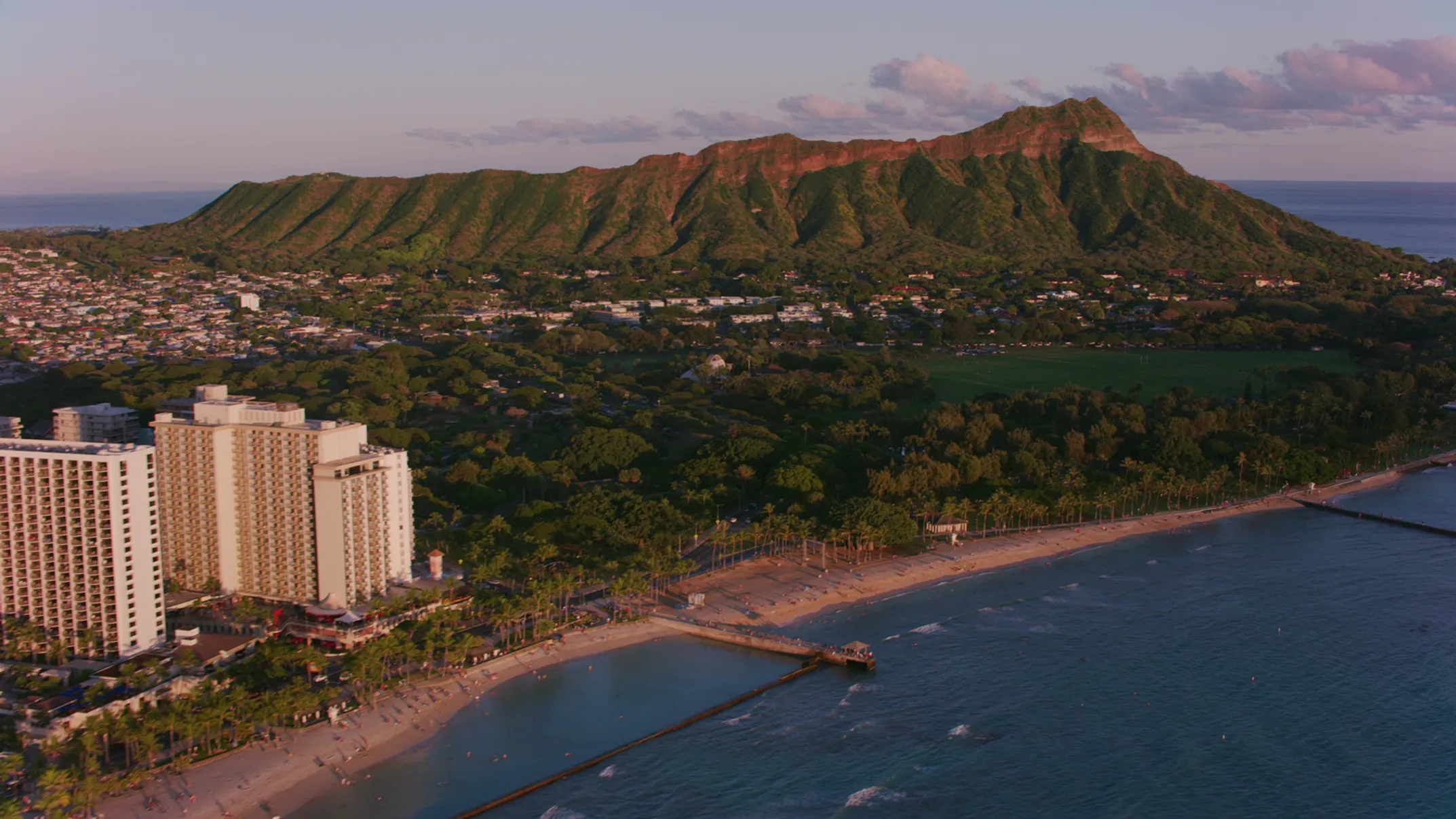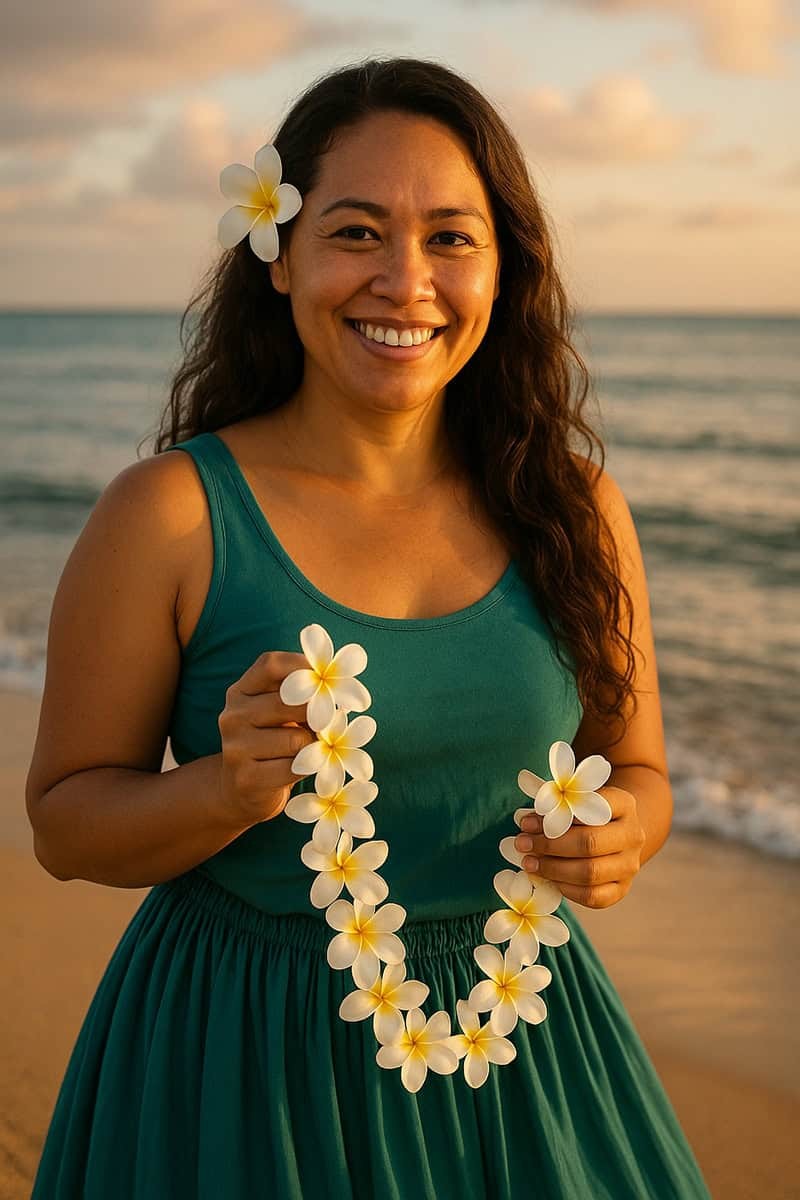

Your Essential Planner
Practical Tips for a Seamless Waikiki & Honolulu Trip

Planning Guide by
Leilani AkoAccommodation Guide: Finding Your Perfect Hawaiian Home Base
Planning a trip to paradise should be exciting, not stressful! This section is packed with practical information to help you navigate Waikiki and Honolulu like a seasoned traveler, addressing many of the common questions and potential hurdles that visitors encounter.
Waikiki and the surrounding Honolulu area offer a vast array of accommodation options to suit every taste, budget, and travel style. Choosing the right place to stay is a key part of planning your perfect Hawaiian adventure.
🏨 Types of Lodging
Luxury Resorts
Stunning beachfront resorts with world-class amenities, pools, fine dining, spas, and kids' clubs. Think iconic names along Kalākaua Avenue.
Boutique Hotels
Intimate experiences with personalized service and unique character. Many are located just a block or two from the beach.
Condo Rentals
Increasingly popular for families or longer stays. More space, kitchen facilities, and a more "local" feel. Book legal, permitted rentals.
Budget Options
Affordable hotels along Kūhiō Avenue or slightly inland. Hostels provide budget-conscious choice for solo travelers.
👥 Considerations for Different Travelers
Families
Look for resorts with kid-friendly pools, kids' clubs, and connecting rooms. Condo rentals with kitchens are convenient. Proximity to calmer beaches like Kūhiō Beach.
Couples
Luxury resorts with spas, fine dining, and romantic ocean views. Boutique hotels for intimate escape. Consider adults-only sections.
Solo Adventurers
Well-located hotels with good safety records, or hostels for social interaction. Easy access to public transport and activities.
Budget-Conscious
Hostels, budget hotels away from prime beachfront, or deals in shoulder seasons. Consider condo rentals for groups to split costs.
Waikiki vs. Slightly Outside
Staying in Waikiki - Pros:
- • Unbeatable convenience to beach, restaurants, shops, nightlife
- • Very walkable with wide range of hotel choices
- • Easy access to tour pick-ups
Cons:
- • Can be crowded and touristy
- • Generally more expensive
- • Parking is a major challenge and expense
Staying Outside (Ala Moana, Kahala, etc.) - Pros:
- • Potentially quieter, more local feel
- • Sometimes better value
- • Easier parking if you have a car
Cons:
- • Requires transportation to Waikiki attractions
- • Fewer immediate tourist amenities
Getting Around Honolulu & Waikiki: A Transportation Deep Dive
Navigating Honolulu and Waikiki can be part of the adventure! While Waikiki itself is very walkable, you'll need transportation to explore further afield, like Pearl Harbor, Coral Crater, or hiking trails. Here's a comprehensive look at your options:
🚌 TheBus (Public Transit)
Oʻahu's public bus system is an affordable and extensive way to get around. Many routes are useful for tourists.
Fare: $3.00 single (includes 2.5 hours of transfers with HOLO card)
Day Pass: $7.50 cap with HOLO card
Multi-day: 3-day ($20), 7-day ($35) passes available
HOLO Card: $2 fee, more convenient for transfers
🚎 Waikiki Trolley
A fun and convenient hop-on, hop-off option specifically designed for tourists with different colored lines.
Blue Line: Ocean/Scenic Route to Sea Life Park
Red Line: City and Arts Route (ʻIolani Palace, etc.)
Pink Line: Shopping Route (Ala Moana Center)
Pricing: 1-day ($62), 4-day ($62), 7-day ($86)
🚲 Biki Bikes
Honolulu's bike-share program is a great way to explore Waikiki and nearby areas.
One-Way: $5.00 for 30-minute ride
The Jumper: $20 for unlimited 30-min rides in 24 hours
The Getaway: $45 for unlimited 30-min rides for 3 days
Multi-Stop: Bank of minutes (e.g., 300 min for $55)
🚗 Car Rentals & Ride-Share
Car rentals offer the most flexibility but come with parking challenges in Waikiki.
Uber/Lyft: $15-25 to Diamond Head, $30-50+ to Pearl Harbor
Hotel Parking: $45-75+ per day in Waikiki
Rush Hours: 5-8:30 AM into town, 3-6:30 PM leaving
Street Parking: Very limited, metered, high demand
Parking in Waikiki: A Major Consideration
If you rent a car, parking is a significant consideration. Most Waikiki hotels charge hefty daily parking fees, often ranging from $45 to $75+ per day.
Parking Options:
- • Hotel valet: $45-75+/day
- • Public garages: Slightly cheaper
- • Street parking: Limited, metered
- • Ala Wai Canal: Weekday morning restrictions
Parking Tips:
- • Red curb = No parking
- • Green = Limited time
- • Yellow/White = Loading only
- • Shopping centers offer validated parking
📋 Planning Essentials
- Hotel Parking: $45-75/day
- Bus Fare: $3 single
- Trolley Pass: $62/day
- Uber to Diamond Head: $15-25
- Reef-Safe Sunscreen: Required
📅 Best Times to Visit
- Summer (May-Sep) Drier, calmer
- Winter (Oct-Apr) More rain
- Peak Season Dec-Jan, Jun-Aug
- Shoulder Season Best deals
Safety First: Beach, Ocean & General Travel Tips
Hawaiʻi is generally a very safe destination, but like anywhere, it's important to be aware of your surroundings and take sensible precautions to ensure a trouble-free vacation.
🌊 Ocean Safety
- • Swim near a lifeguard (Waikiki beaches have lifeguard towers)
- • Obey warning signs for surf conditions, currents, hazardous marine life
- • Swim with a buddy (never swim alone)
- • Know your limits - stay in shallow areas if not a strong swimmer
- • Be aware of rip currents - swim parallel to shore to escape them
- • Box jellyfish appear 7-10 days after full moon
- • Coral reefs are sharp - avoid walking on them
☀️ Sun Safety
- • Hawaiian sun is strong, even on cloudy days
- • Apply reef-safe sunscreen liberally and often
- • Choose sunscreens without oxybenzone and octinoxate
- • Wear wide-brimmed hat and UV-protective sunglasses
- • Drink plenty of water throughout the day
- • Seek shade during peak sun hours (10 AM - 4 PM)
🥾 Hiking Safety
- • Stay on marked trails to protect environment and prevent getting lost
- • Wear proper footwear - sturdy, closed-toe shoes with good traction
- • Carry water and snacks
- • Inform someone of hiking plans and expected return time
- • Check weather forecast before going - conditions change quickly
- • Start early to avoid heat and crowds
🔒 General Safety
- • Don't leave valuables unattended on beach or visible in car
- • Use your hotel safe for important items
- • Be aware of surroundings, especially in crowded areas or at night
- • Always lock rental car and don't leave items in plain sight
- • Keep copies of important documents
- • Trust your instincts - if something feels wrong, leave
Best Times to Visit & Weather Guide
Waikiki and Honolulu are fantastic year-round destinations, with consistently warm weather. However, there are some nuances to consider:
☀️ Summer (May - September)
- • Generally drier and sunnier
- • Very warm temperatures (average highs in the 80s F)
- • Ocean waters typically calmer on South Shore
- • Ideal for swimming and snorkeling
- • Peak tourist season (higher prices)
🌧️ Winter (October - April)
- • Still warm but higher chance of rain
- • Especially November to March
- • Big waves hit North Shore (pro surfing season)
- • Waikiki's South Shore usually remains calm
- • Whale watching season (Dec-May)
Crowd Levels & Pricing Guide
Peak Seasons (Higher Prices & Crowds):
- • Mid-December to mid-January (holidays)
- • June to August (summer vacation)
- • Late February to mid-April (spring break and Japan's Golden Week)
Shoulder Seasons (Best Value):
- • Mid-April to early June
- • September to mid-December (excluding Thanksgiving)
- • Good balance of pleasant weather, fewer crowds, better deals
Practicalities: Tipping, Packing Essentials & Sample Itineraries
💰 Tipping Customs
Restaurants: 15-20% of pre-tax bill for good service
Bartenders: $1-$2 per drink or 15-20% of bar tab
Tour guides: $10-$20 per person for half/full-day tours
Hotel staff: Bellhops $1-$2/bag, housekeeping $2-$5/day
Taxi/rideshare: 15-20% of fare
Spa services: 15-20%
🎒 Packing Essentials
- • Reef-safe sunscreen (essential!)
- • Reusable water bottle
- • Light rain jacket or poncho
- • Good walking shoes
- • Water shoes/reef walkers
- • Aloha shirt / sun dress
- • Hat & sunglasses
- • Small backpack for day trips
- • Waterproof bag/pouch for electronics
Sample Itineraries
3-Day Waikiki Adventure:
- Day 1: Morning surf lesson, afternoon exploring beach sections, sunset catamaran cruise
- Day 2: Morning Pearl Harbor visit, afternoon historic downtown Honolulu
- Day 3: Early Diamond Head hike, afternoon Coral Crater Adventure Park, evening local food and hula show
Family Fun Week:
- Day 1-2: Waikiki beach fun, beginner surf/SUP lessons
- Day 3: Honolulu Zoo & Waikīkī Aquarium
- Day 4: Pearl Harbor family tour
- Day 5: Coral Crater Adventure Park
- Day 6: Manoa Falls hike, shave ice
- Day 7: Cultural activities, shopping, fireworks
Cultural Immersion (5 Days):
- Day 1: Waikīkī Historic Trail, Kūhiō Beach Hula Show
- Day 2: ʻIolani Palace, Kawaiahaʻo Church, Kamehameha Statue
- Day 3: Bishop Museum
- Day 4: Pearl Harbor in-depth visit
- Day 5: KCC Farmers Market, explore local artisan shops, traditional Hawaiian meal
Travel Pono: Responsible & Sustainable Tourism in Hawaii
As much as we love sharing our beautiful islands with visitors, we also hold a deep sense of kuleana – responsibility – to care for our precious land, ocean, and culture. To Travel Pono means to travel consciously, respectfully, and thoughtfully, ensuring that your visit has a positive impact, or at least minimizes any negative footprint.
🌺 Respect Hawaiian Culture
- • Learn about and respect local customs and traditions
- • Treat heiau (ancient temples) with reverence
- • Don't climb on structures, move rocks, or take anything
- • Be mindful of private property and local residential areas
🏪 Support Local Businesses
- • Choose locally owned shops, restaurants, and tour operators
- • Your spending directly benefits our community
- • Buy authentic "Made in Hawaiʻi" products from local artisans
- • Ask about the artists and choose quality over quantity
🐢 Protect Marine Environment
- • Never touch or harass marine life (turtles, seals)
- • Admire from safe distance (10 ft for turtles, 50 ft for seals)
- • Don't stand on or touch coral reefs
- • Use only reef-safe sunscreen (no oxybenzone/octinoxate)
💧 Conserve Resources
- • Conserve water: Take shorter showers, turn off taps
- • Reduce energy: Turn off lights and AC when leaving
- • Say no to single-use plastics
- • Bring reusable water bottle and shopping bags
🗑️ Reduce Waste
- • Pack out everything you pack in
- • "Leave no trace" especially when hiking or at beach
- • Recycle properly - look for designated bins
- • Choose reusable over disposable items
🥾 Stay on Trails
- • When hiking, stay on designated paths
- • Prevents erosion and protects native plants
- • Protects sensitive habitats
- • Learn about Hawaii's unique environment and culture
When you Travel Pono, you become part of the solution, helping to preserve the beauty and spirit of Hawaiʻi for generations to come. As someone who grew up exploring these islands, the concept of mālama ʻāina (caring for the land) is deeply ingrained. It's about giving back as much as you receive from your visit.
